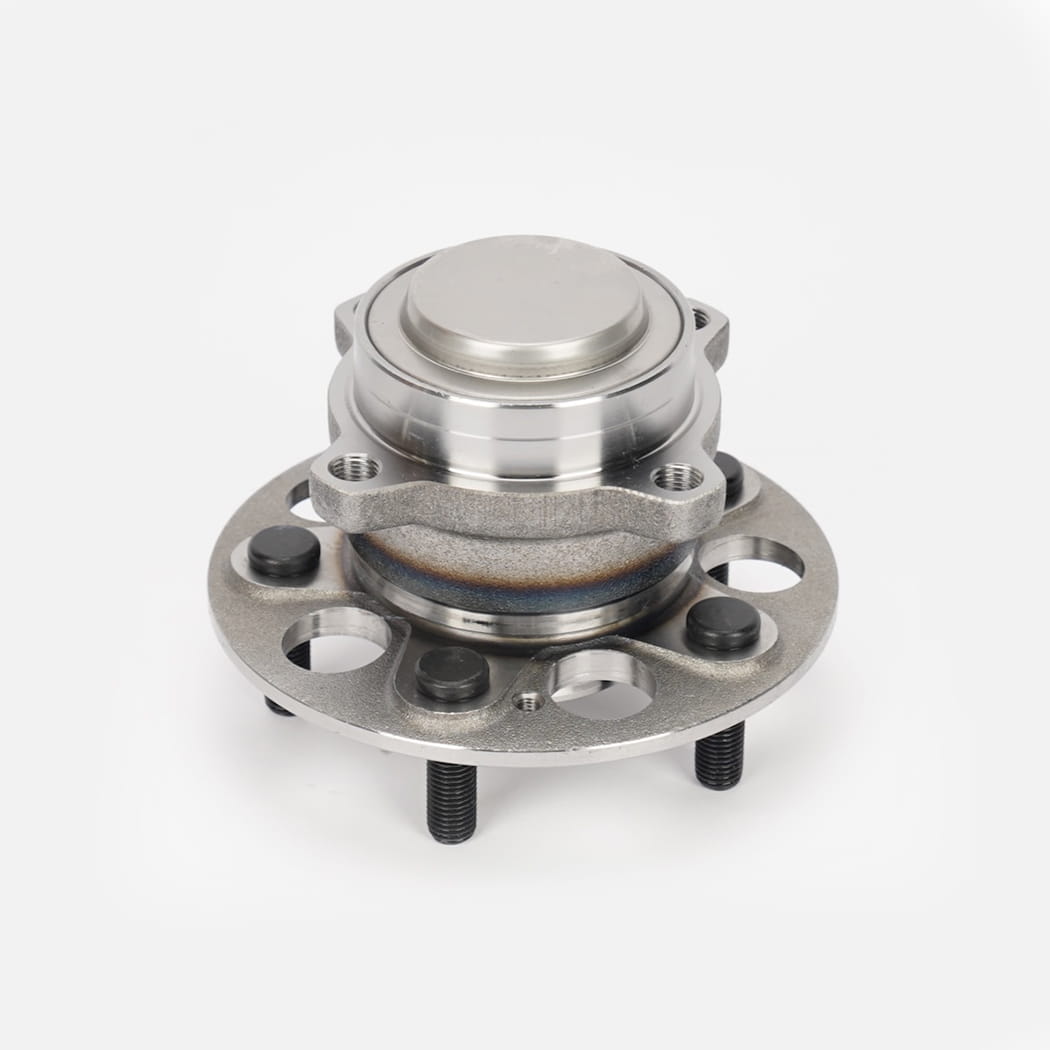The Wheel Hub Unit (WHU) is one of the most vital, yet often overlooked, components in a modern vehicle’s suspension and drivetrain. Far more than just a simple bearing assembly, the Wheel Hub Unit is an integrated system that serves multiple critical functions, directly influencing a vehicle’s performance, safety, and reliability. Understanding its structure and role is essential for anyone involved in vehicle maintenance, engineering, or automotive parts supply.
The Structure and Function of Wheel Hub Units
A Wheel Hub Unit is essentially an advanced, pre-assembled bearing cartridge that bolts directly to the steering knuckle or axle. Its primary function is to allow the wheel to rotate freely and with minimal friction, while simultaneously supporting the full weight of the vehicle and enduring significant radial and axial loads from driving forces, cornering, and braking.
Modern WHUs are integrated assemblies, typically incorporating:
- The Hub: The central mounting point to which the wheel (via the rotor/drum) is bolted.
- The Bearings: Precision-engineered rolling elements (balls or rollers) that allow smooth rotation. These are often sealed for life and pre-lubricated.
- The Inner and Outer Races: The tracks that guide the rolling elements.
- The ABS Sensor Ring (or Tone Wheel): A crucial component for the Anti-lock Braking System (ABS) and often the Traction Control System (TCS) and Electronic Stability Control (ESC). This sensor ring provides the wheel speed data to the vehicle’s computer.
Evolution of the Wheel Hub Unit Design
Wheel Hub Units have evolved over several generations, reflecting advancements in automotive engineering:
- Generation 1: Separate bearings (inner and outer) that required manual greasing and adjustment upon installation.
- Generation 2: Integrated bearing and flange assemblies, which are pre-set and sealed, reducing complexity and maintenance.
- Generation 3: The fully integrated Wheel Hub Unit cartridge, which combines the hub, bearing, and mounting flange into a single, non-serviceable unit. This is the dominant design today, offering superior stiffness, longevity, and ease of installation.

Wheel Hub Units and Vehicle Safety
The integrity of the Wheel Hub Unit is inextricably linked to vehicle safety systems. Since the WHU houses the wheel speed sensor ring, any failure of the unit can directly impair the function of critical electronic safety systems.
- ABS/TCS/ESC: The sensor ring within the Wheel Hub Unit is the data source for these systems. If the WHU fails, or if the sensor is damaged during installation, it can lead to erratic or complete loss of ABS/TCS/ESC function, illuminating the dashboard warning light and severely compromising braking and stability control.
- Steering and Handling: A failing WHU, indicated by symptoms like grinding, roaring noise, or excessive play, can lead to imprecise steering and poor handling, particularly during high-speed maneuvers or hard braking. Catastrophic failure can lead to wheel separation, making regular inspection and prompt replacement vital.
Diagnostics and Maintenance Considerations
While Wheel Hub Units are designed for long service life, they are subject to wear due to extreme operating conditions, including heat, dirt, water, and road shock. Diagnosis typically involves listening for unusual noises—a characteristic “growling” or “roaring” that changes with speed or during cornering.
Key Maintenance Notes:
- Torque Specifications: When replacing a WHU, adhering strictly to the manufacturer’s torque specifications for the mounting bolts and axle nut is crucial. Over-tightening can damage the internal components and prematurely fail the new unit, while under-tightening can lead to looseness and dangerous failure.
- Sensor Protection: Extreme care must be taken to protect the integrated ABS sensor and wiring during installation to ensure the vehicle’s electronic safety systems remain fully operational.
- Quality of Parts: Given the safety-critical nature of the component, using high-quality, reputable Wheel Hub Units that meet or exceed Original Equipment (OE) standards is non-negotiable for ensuring vehicle reliability and passenger safety.
In conclusion, the Wheel Hub Unit is a cornerstone of modern automotive technology. It is a precision-engineered assembly that carries the burden of vehicle motion and simultaneously acts as the sensory input for sophisticated electronic safety features. Its correct functioning is not merely about smooth rolling; it’s about the fundamental safety and dynamic performance of the vehicle.
